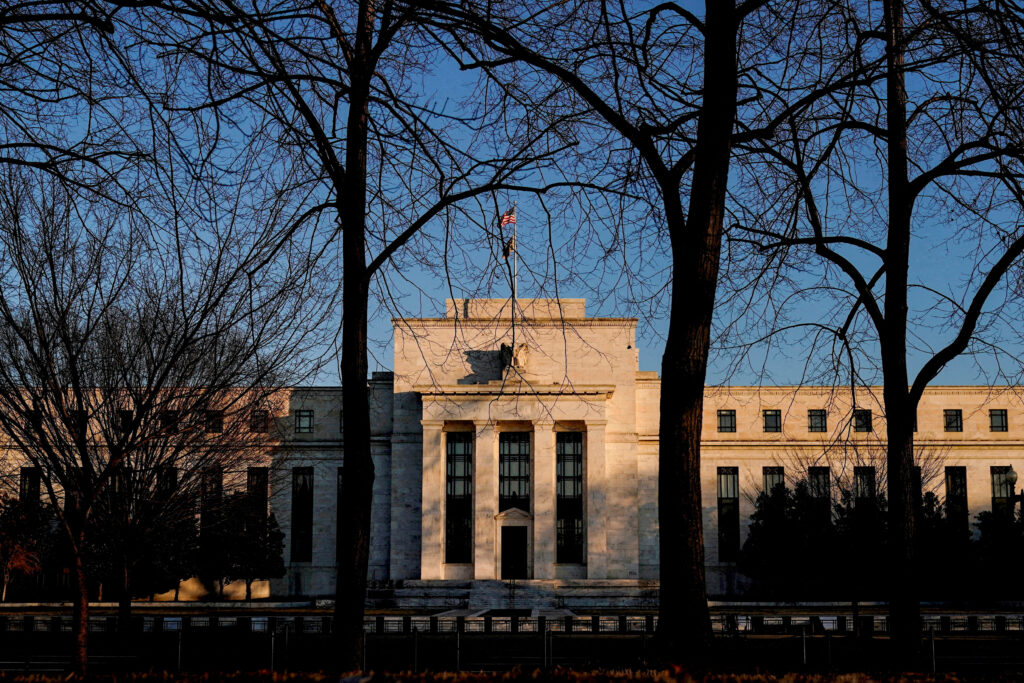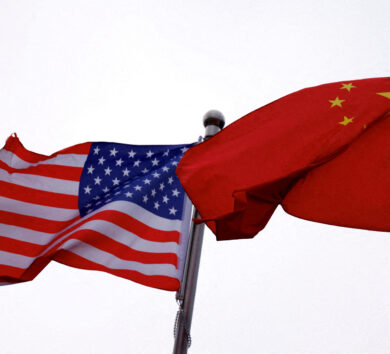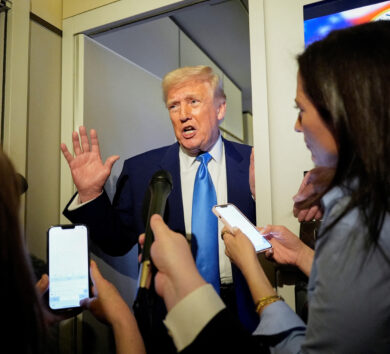

(Reuters)
The Federal Reserve will doubtless leave interest rates unchanged on Wednesday, but the meeting may be the last where the outcome is so cut and dry with President Donald Trump’s tariffs casting a shadow of uncertainty over the economic outlook.
Trump’s erratic rollout of the steepest U.S. tariffs in a century has tanked consumer and business sentiment, squeezed manufacturing, and prompted a preemptive rush on imports so big that U.S. gross domestic product output shrank unexpectedly last quarter.
A stampede of U.S. companies, including McDonald’s, General Motors, and Apple, has warned of big hits to earnings as higher import levies raise costs and deter spending; airlines including Delta Airlines have scrapped their forecasts altogether.
Fed policymakers expect the tariffs to increase both inflation and unemployment, although to what degree and for how long is unclear. The economic data in hand so far does not suggest the economy is crumbling. Despite the 0.3% annualised decline in U.S. GDP last quarter, consumer spending still grew at a decent 1.8% pace. The Labour Department’s closely watched jobs report on Friday showed that U.S. employers added 177,000 jobs in April – roughly 40,000 more than forecast – and the unemployment rate remained steady at 4.2%.
Fresh quarterly forecasts from U.S. central bank policymakers are not due until June, so investors will be looking to Fed Chair Jerome Powell for clues on the interest rate path during a press conference following the end of the two-day meeting on Wednesday.
The Fed has held its policy rate in the 4.25%-4.50% range since December. Fed policymaker projections from March point to two rate cuts this year, but those look stale given the torrent of trade news since, including Trump’s April 2 “Liberation Day” tariffs on trading partners around the world, his pause on many of those levies a week later to give time to negotiate new trade deals, and the imposition of 145% tariffs on most Chinese goods.
Last month Powell said he wanted to be “certain” that a temporary tariff-driven rise in prices “does not become an ongoing inflation problem.” A still-solid labour market frees the Fed to do that.
“When are policymakers ever certain about anything?” said Derek Tang, an economist at forecasting firm LHMeyer. “Certain seems like a high threshold, and it points to them prioritising inflation.”
The situation could change quickly if the labour market starts to deteriorate, Tang said, forcing the Fed to weigh the need to achieve low inflation against its obligation to aim for full employment. For now, though, LHMeyer economists expect no rate cuts at all this year.
Fed independence
Most economists expect the Fed to ease in 2025, though many don’t think there is enough evidence of labour market weakness to justify a response until the summer. After the release of the April jobs report, Barclays economists said they believe the Fed won’t reduce borrowing costs until July, a time frame that allows for more clarity on tariffs and a Republican-backed tax-cut bill.
Financial market bets also shifted to favor a July start to rate cuts, with two additional moves during the course of the year.
“The Fed’s in a tough spot,” said Nancy Vanden Houten, senior economist at Oxford Economics, adding that the Oxford team expected “real weakness” in the months ahead and that the central bank could be faced with the prospect of higher inflation and inflation expectations getting out of control.
Vanden Houten and her colleagues believe it will be December before the Fed cuts rates.
“It looks like they are furthest away from achieving their goal on inflation, so as long as the labor market hangs in there we think they are going to sit tight,” she said.
Fed Governor Christopher Waller, whose remarks in the past have foreshadowed Fed actions, offered a map to Fed decision-making that laid out two options – gradual rate cuts later in the year should tariffs get knocked down to a lower level, and more aggressive rate cuts should they stay high.
A key factor will be the pace of change in the unemployment rate: if it rises by more than one-tenth of a percentage point in any given month, Waller said, that would be a trigger for the Fed to move sooner and bigger. In his view any impact from tariffs on inflation would likely only be temporary.
Powell is unlikely to be so specific this week about the plans of the policy-setting Federal Open Market Committee, economists said.
“We expect the main message from Chair Powell’s press conference to be that the Committee is well positioned to wait for greater clarity before making any changes to policy,” wrote Michael Feroli, chief U.S. economist at J.P. Morgan.
That patience is unlikely to be viewed as a virtue inside the White House. The Fed’s decision to hold rates steady has not gone over well with Trump, who continues to press for lower borrowing costs.
“NO INFLATION, THE FED SHOULD LOWER ITS RATE!!!” Trump said Friday on his Truth Social media platform after the release of the monthly payrolls report.
The most recent readings of inflation have indeed been benign, but Fed officials and private economists expect it to begin climbing again due to price increases instigated by Trump’s tariffs.
The U.S. president, after a number of threatening rumblings about removing Powell, has said he has no intention of firing the Fed chief, whose tenure at the helm of the central bank ends in about a year, and Powell maintains that doing so would not be legally permissible. A pair of cases now before the U.S. Supreme Court will test whether Trump has the authority to fire Fed officials.







Comments